12 Reasons Teachers Love All About Reading and All About Spelling
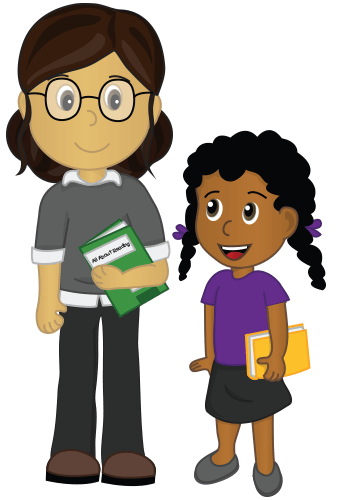
Did you know that All About Reading and All About Spelling are great options for schools when students are taught one-on-one or in small groups?
Both programs are used in a variety of educational settings in public and private schools. Many schools use the programs in their RTI (Response to Intervention) programs, including Tier 2 and Tier 3 interventions.
This post explains why teachers love to use the All About® programs and provides some tips for using the curriculum and tracking student progress.
So why are so many teachers excited about All About Reading and All About Spelling? Let’s take a look.
12 Things Teachers Love about AAR and AAS
Educators appreciate that the curriculum provides all students, including at-risk students, with the tools they need to break down literacy and spelling barriers. To do this, All About Reading and All About Spelling use very specific teaching methods.

Our programs are based on the Orton-Gillingham approach.
This highly-structured multisensory approach uses multiple pathways to the brain to make reading and spelling accessible. Feel free to download our free e-book called The Power of the Orton-Gillingham Approach to learn about the hallmarks of the OG approach and how these proven methods are incorporated in All About Reading and All About Spelling.

Our programs use explicit, direct instruction.
Direct instruction is a proven method in which students are taught exactly what they need to learn. With direct instruction, the information is presented very clearly through well-tested materials that rule out the possibility of misinterpretation and confusion. Language rules and patterns are taught explicitly, so students don’t have to guess or struggle. Download sample lessons here.
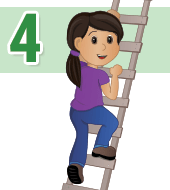
Lessons are incremental.
Incremental means that lessons start with the most basic skills and build gradually to more advanced skills. Each lesson builds upon previously mastered material and gradually increases in difficulty. This provides a “no-gaps approach” that allows students to learn one new piece of knowledge at a time in a well-developed, logical sequence.
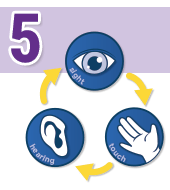
Our programs are multisensory.
Multisensory learning happens when sight, sound, and touch are used to learn new information. Children learn best when they can use all their senses. When students can see a concept as it is explained, hear about it, and then do it with hands-on activities, it is easier for them to learn and retain the new information.
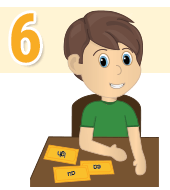
We teach the 72 basic phonograms.
Struggling learners often believe that reading and spelling are about memorizing strings of letters. But it’s difficult for most kids to memorize words this way, so they get frustrated and give up. Instead, we teach how each sound in a word can be represented by a phonogram, such as OA for the sound of /ō/. When students learn the phonograms and the sounds they represent, reading or spelling become much easier.

We teach just one new concept at a time.
When too much information is dumped into a child’s mental “funnel,” his or her memory can only attend to a certain amount of the new information, and the rest gets “dumped” from memory. Teaching one concept at a time respects the limitations of a student’s short-term memory and allows concepts and skills to be more easily stored in the long-term memory.

We teach reading and spelling separately.
Reading and spelling require different teaching techniques and different pacing. Reading is easier than spelling, and learning these subjects separately is much more effective for most kids. Separating reading and spelling allows students to progress as quickly as possible through reading while taking as much time as they need to become good spellers.
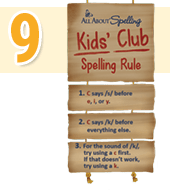
We teach reliable spelling rules.
Spelling is much easier when children learn a small number of reliable spelling rules. For example, knowing the rules regarding the use of C and K can help children spell words like kitchen, acceptable, and automatic. When students learn trustworthy spelling rules—like the Kids’ Club Rule—they have guidelines to help them make the right letter choices.
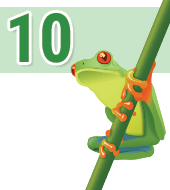
We make review a priority.
Consistent review is the key to getting spelling facts and spelling words to “stick.” Teaching something once or twice does not mean students have mastered it. Mastery takes time and practice, and our lessons provide interesting review activities.
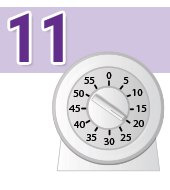
Lessons are short.
We recommend just 20 minutes a day for AAR and 20 minutes a day for AAS. Short lessons five times a week are more effective than longer, less-frequent lessons because you avoid overwhelming your students with new information and you can keep their attention more easily.

No special training is required to teach our programs.
You don’t have to go through a seminar or watch training videos to learn how to teach our programs. Everything you need is right there in the teacher’s manual as you go through the lessons, so it’s very open-and-go, which cuts down on your prep time. And if you ever need a substitute teacher or paraprofessional to fill in for you, he or she can follow the scripted lesson plans.
Using All About Reading and All About Spelling in a school is not only possible, we’ve also done everything we can to make our programs easy for you to implement.

Tips for Using AAR and AAS in a School
Tip 1: Determine the Correct Level for Your Students
As you know, every student is more than just her “grade” or numerical age. A child’s unique experiences and aptitude play an important role in where she should be placed in the programs.
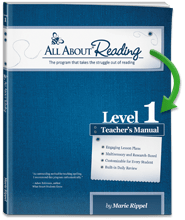
All About Reading and All About Spelling are “building block” programs. This means that each level builds upon the previous level. For example, the rules and concepts learned in Level 1 are applied in Level 2, and then those from Level 2 are applied in Level 3, and so on.
This also means that the level numbers you see on the book covers don’t refer to grade levels. This is good news for teachers because you can place your students in the levels they need, regardless of grade level.
All About Reading and All About Spelling are mastery-based programs that
- place students according to ability rather than grade level;
- teach students at their individual pace; and
- progress to the next level only after mastery is achieved.
You can find specific placement information here.
All About Reading and All About Spelling are especially valuable when used one-on-one or in small groups with “at-risk” children.
Tip 2: For Struggling Students, One-on-One Instruction Is Highly Recommended
One-on-one instruction for struggling students is always the best option. Here’s why one-on-one instruction works.
- With one-on-one instruction, you can tailor each lesson to more effectively address a child’s individual needs and specific issues.
- Not all kids in your school are going to learn at the same pace. One-on-one instruction allows you to adjust the pace of the lesson for each student.
- If a student misses a lesson, you don’t have to catch him up later, overwhelming him with too much content.
- When you teach a struggling child one-on-one, she doesn’t have to be embarrassed by her errors.
- Since some kids need more review and activity time to “get it,” one-on-one instruction provides time for focused review.
- At-risk students need the lesson intensity that only one-on-one instruction can provide.
Tip 3: Use AAR and AAS with a Small Group

If one-on-one instruction isn’t possible, we highly recommend that students be taught in small groups of two or three students. Here’s why small-group instruction works.
- It allows students to watch the teacher demonstrate the concepts being taught.
- It gives students a chance to practice.
- It provides the opportunity for the teacher to listen to each child read.
- It gives teachers the ability to notice and correct small problems before they become big problems.
- It makes it easier to hold the students’ attention and keep them motivated.
When forming small groups, consider the following guidelines.
- Use the placement tests to guide you in grouping kids together.
- Group students who will benefit from the same type of strategies. For example, if you have “word guessers,” they will all benefit from the same type of instruction.
- Consistency is critical. If at all possible, meet five days per week.
Tip 4: Student Achievement Can Be Tracked with These Easy-to-Use Tools
In many schools, teachers are required to track and report student progress. Here are some sample progress tracking documents that have been created for use with AAR. Feel free to adapt them for your own needs.
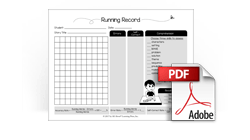
Running Record
:
This running record is used to record errors or miscues while the student reads 100 words of text. This helps you see error patterns and plan appropriate instruction.
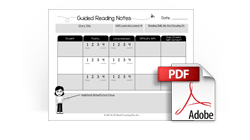
Guided Reading Notes
:
Use this document for taking notes during guided reading. When used consistently, you can see student progress over time.

All About Spelling Word List Assessment
:
Use this chart to assess student progress on word lists and dictation exercises in
All About Spelling lessons. Find trouble spots and incorporate review as needed.
Tip 5: Consider Using Fidelity Checklists When First Implementing the Programs
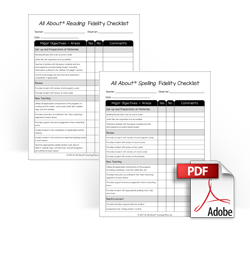
Fidelity Checklists
:
These simple observation tools can be used to give feedback to teachers and paraprofessionals regarding their implementation of
AAR and
AAS. This helps ensure that the programs are being used as intended.
Reading and Spelling Placement
Our downloadable placement tests can help you determine what level of All About Reading and All About Spelling will be most appropriate for your students.
Reading Placement Tests
Spelling Placement Test
All About Spelling is a building block program: each level builds upon the previous one. In order to build a strong foundation, most students begin in Level 1. Students with a strong phonics background might be able to begin with Level 2. The All About Spelling Placement Guide will help you determine the best placement for your students.
If you would prefer to use our online placement test, click here.
Lifetime Support
And finally, please know that we provide lifetime support for you as the teacher. If you ever need help, just email us or give us a call! We’re happy to help!











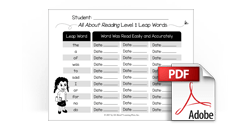

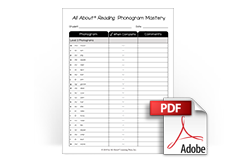
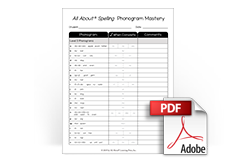

Ladonna
says:Can you give me guidance on copyrights, etc. to be able to use AAR in my public school for Tier 2 and 3? Thank you!
Robin
says: Customer ServiceWe’re happy to help, Ladonna! Please email us your questions to support@allaboutlearning.com.
Jennifer Shouldice
says:Hi, I am a primary/junior educator in Ontario and have purchased this program (all levels) for my kids at home. I am curious how the program could be transferred to classroom use and what would be the expectations for educators to bring this great programming to students in schools. Thanks
Robin
says: Customer ServiceJennifer,
I’ll have our School Coordinator email you.
Maryam
says:Hi. I’m interested in using aar and aas as part of a private school’s curriculum. Would love more info on bulk purchase, copyrights, etc
Robin
says: Customer ServiceMaryam,
Thank you for your interest! Our School Coordinator will be reaching out to you soon to answer any questions you may have.
Meagan Griffin
says:Hello, I have a small hybrid homeschool with 12 students. I am really wanting to use AAR and AAS. Would love more info on how to use in a classroom setting. Would love to know options if buying curriculum in bulk. Thank you
Robin
says: Customer ServiceMeagan,
Thank you for your interest! Our School Coordinator will be reaching out to you before to answer any questions you may have.
Robin
says: Customer ServiceAmie,
You can reach Merry again at support@allaboutlearningpress.com.
Sharon
says:Hello! I’m sourcing curriculum for a new private school and would love to use AAR/AAS for our phonics. I’d love to see any other tips/information that would help us implement the program most successfully. Thanks!
Robin
says: Customer ServiceSharon,
I have forwarded your questions and email address to our School Coordinator and she will be reaching out to you before long.
Monica
says:Hi, I am interested in the info on how to use this and aas in a classroom! Also, I have older students who need help (5th grade) , so info on that would be great as well! Thanks!
Merry
says: Customer ServiceThanks for your question! I’ll have our school coordinator get in touch with you. :-)
Robin E.
says: Customer ServiceI emailed it to you, Amy. Let me know if you need anything else.
Robin E.
says: Customer ServiceI emailed, Lindsay! Let me know if you have questions or need anything.
Robin E.
says: Customer ServiceI emailed you, Julie.
Autumn
says:Can I get a copy too? I teach in a small private school and would love to show my administrator the information. Thanks!
Robin
says: Customer ServiceThank you for your interest, Autumn! I’ll have our school coordinator get in touch with you.
Robin E.
says: Customer ServiceI have emailed it to you, Alissa.
Robin E.
says: Customer ServiceNo bother, Cassidy. I’ve emailed it to you.
Robin E.
says: Customer ServiceSure, Morgan. I have emailed you.
Robin E.
says: Customer ServiceI emailed you, Evie.
Beth Garcia
says:Thank you for this. I had just asked about AAR and AAS and if it was able to be implemented into my small microschool (8-10 kids). This is very helpful!
Robin E.
says: Customer ServiceI’m glad this was helpful for you, Beth! If you have additional questions or need more information, just ask. We’re happy to help!
Kristen
says:Thank you so much for this article. My husband and I are starting a private school with our church and have 14 students so far. I have used this curriculum with our daughters with great success in our homeschool so we want to implement it with the new students. Thank you for the free downloads; they will be very helpful with the school.
Trisha Engelbrecht
says:I have been using your program in my classroom for two and a half years now. I have the app on my ipad for use with struggling students. My school is interested in buying the app for an entire classroom. Is there a discount for buying in volume?
#Doesn’tHurtToAsk
Robin E.
says: Customer ServiceTrisha,
It definitely doesn’t hurt to ask. Please email us with the number of devices you are considering and we will see what we can do. support@allaboutlearningpress.com
Nina Reeder
says:Can I have some more information about how to use this in my classroom? Last year I took a break from teaching and homeschooled my children. Now I am back in the classroom. I am so much more confident in my ability to teach reading after using this program. I’d love to use some of the activities in the classroom with my students, but I can’t see how that would be feasible on such a large scale. I could definitely see using it in small group or one-on-one, but what about for the whole group? I would love to hear more.
Robin E.
says: Customer ServiceNina,
Lots of schools have used this approach for group instruction. It does take some adjusting. If you call our office, our school coordinator would be happy to help! Also, check out the downloadable assessment forms in this blog post.
Thanks for your interest! Please let me know if you have additional questions.
Robin
says: Customer ServiceI emailed it to you, Juliet.
Robin E.
says: Customer ServiceI emailed it to you, Serenity.
Robin E.
says: Customer ServiceI emailed it to you, Rachel.
Robin E.
says: Customer ServiceI emailed you, Sarah.
Merry
says: Customer ServiceHi Annamarie, I just emailed a copy for you! :-)
Jennifer
says:If using All About Reading in a school classroom, is it possible to just use 1 set of the readers for the whole class?
Robin E.
says: Customer ServiceJennifer,
I can’t think of how it would work to share a single set of Readers with more than two or three students. All About Reading schedules students to read a story, sometimes two, in the Readers approximately every other lesson. In fact, reading a story is the main activity, with other activities directly related to the story, for about half of all the lessons. Ideally, there will be a set of Readers for each student, as many students benefit from rereading stories more than once, particularly in the areas of fluency, speed, and accuracy. I do think it might work to have one set of Readers for every two to three students if you staggered their reading of the stories over two to three days, but I can’t imagine having fewer Readers than that.
Please let me know if you would like more information about implementing All About Reading in a classroom setting.
Nisha
says:Hi…my 7 year daughter have phonology dyslexia. My Dr. Is suggesting me AAR and AAS programs to help my child.can you please suggest me how to get it and how many programs I need. Thanks
Robin E.
says: Customer ServiceNisha,
Sure! Start with our All About Reading placement tests. If your daughter places into level 2 or higher, then also start All About Spelling level 1 at the same time. However, if she needs the Pre-reading level or level 1, wait to begin All About Spelling until she has completed All About Reading level 1.
You can order our products through our website.
I hope this helps, but please let me know if you have further questions or need anything else.
Angela Henson
says:This is soooooo helpful! Thank you for putting this together for hybrid homeschool co-op like ours! We’ve been using your products in the classroom and at home for three years now and we love them. This resource is just what our classroom teachers needed to remind them of the why, what, and how of what we do in AAR. Thank you!
Robin E.
says: Customer ServiceYou’re welcome, Angela! It’s great to hear that All About Reading is working out so well for your hybrid school even after three years. Let me know if you need anything or if your teachers, classroom or home, have any questions!
Rina
says:Do I need to buy spelling tiles for all of my students (4), or would the app work well? I was thinking that it would be quicker and easier using the app instead of the tiles so I don’t have to spend time setting up between groups.
Robin E.
says: Customer ServiceRina,
Great question. Either one set of letter tiles or one download of the app will work with multiple students, so which would be best for your four students is a matter of personal preference. Here we list the pros and cons of each option to help you decide. Let me know if you have more questions or concerns about the app or tiles. I have used the tiles for years with my three students, but we are now loving the app. Both, however, lead to great learning.
Aimee
says:I’m using spelling with my older struggling speller and she’s excelling with the multi-sensory approach. Thanks!
Robin E.
says: Customer ServiceAimee,
Thank you for letting us know that your struggling speller is now excelling with the multisensory approach!
Kerry
says:I’ve done the first 4 levels with my ow home schooled children and love AAS. I’ve been teaching for 27 years and the spelling rules suddenly made sense!
Robin E.
says: Customer ServiceKerry,
Wow, you have been teaching for 27 years! That is a real testimony to how well All About Spelling makes things easy to understand. Thank you.
Sherry
says:We have been using AAR1 for a few weeks now. I had hoped my 9 year old would “fly” through it but even though he considers it “too easy” he struggles with some of the sounds and combination of sounds. So he definitely needs this level to consolidate. I’m glad I started here. My 7 year old is thrilled to be learning to read and looks forward to his reading lesson. I chose to read this article to see if/ how I could translate the AAR/AAS programs to the resource portion of my teaching. It’s possible but ultimately it will depend on the students and their literacy needs.
Robin E.
says: Customer ServiceSherry,
If you have any questions about how you could use All About Reading and All About Spelling as a resource teacher, please ask. It does, of course, depend on the students’ needs, but our programs have been used with a lot of success in such classrooms.
Amanda Bass
says:We use AAS at home and I love it with my daughter! We will continue to use it until it’s completed!
Helen
says:Hope to be able to start the reading and spelling programs this summer.
Braci
says:I am looking for a new reading program for my 6 yr old son. He loves math and does okay with sounding out words but does not enjoy reading. I want him to read well and enjoy reading.
lindsey
says:we have been so encouraged using this curriculum reading is finally clicking with my son and he loves the multi sensory approach.
Robin E.
says: Customer ServiceLindsey,
We are so happy to hear that reading is clicking with your son!
Jenny
says:I have using AAR and AAS for 6 years now, and I love it! My second child has dyslexia, and her reading tutor is super complementary about the foundation she has received from this program.
Robin E.
says: Customer ServiceJenny,
Thank you for sharing this. It’s great to hear that your child’s reading tutor is pleased with the foundation that AAR and AAS have given her.